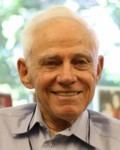Name Theodore Geballe Role Professor | ||
 | ||
Born January 20, 1920San Francisco, United States ( 1920-01-20 ) Institutions Stanford UniversityBell Labs Notable awards Oliver E. Buckley Condensed Matter Prize Awards Guggenheim Fellowship for Natural Sciences, US & Canada People also search for Malcolm Beasley, William Giauque, Robert H Hammond, Khiem B. Do, Pin-Chin Connie Wang | ||
Theodore H. Geballe is an American physicist who is an emeritus professor of applied physics at Stanford University. He is known for his work on the synthesis of novel materials of interest to several areas of physics and many interdisciplinary sciences.
Contents
Biography
Theodore Geballe was born and brought up in a Jewish family in San Francisco, California. His grandfather left the Province of Posen in Prussia to move to the United States during the First World War. He attended the Galileo High School in San Francisco, graduating in 1937. Geballe then travelled across the San Francisco Bay to attend college at the University of California, Berkeley. While still an undergraduate student at Berkeley, Geballe worked at William Giauque's lab to accurately measure the specific heat of gold.
In 1941, Geballe was called to active duty as an Army Ordnance Officer during the Second World War. Geballe served in Australia, New Guinea and the Philippines and was responsible for maintaining guns.
After the war, Geballe returned to Berkeley as a graduate student of Giauque, graduating in 1949 - the same year that Giauque won the Nobel Prize in Chemistry. In 1952, he moved to Bell labs in Murray Hill, New Jersey. While at Bell labs, he worked on studying transport properties in semiconductors at very low temperatures, and also on studying properties of unconventional superconductors. In 1967, Geballe joined Stanford University as a professor in the newly founded Department of Applied Physics as well as the Department of Materials Science and Engineering. Geballe was involved in research in the then-upcoming field of multilayered heterostructure materials.
Geballe served as the head of the Department of Applied Physics at Stanford from 1975-1977, and was the director of the Center for Materials Research from 1978-1988.
Awards and honours
Geballe, along with Bernd Matthias won the 1970 Oliver E. Buckley Condensed Matter Prize awarded by the American Physical Society "for experiments that challenged theoretical understanding and opened up the technology of high-field superconductors." Geballe also won the 1991 von Hippel award by the Materials Research Society, and was made a member of the National Academy of Sciences in 1973.
In 1989, he receive the Bernd T. Matthias Prize.
In 2000, the new Laboratory for Advanced Materials at Stanford was named "The Theodore H. Geballe Laboratory for Advanced Materials" in his honor.
